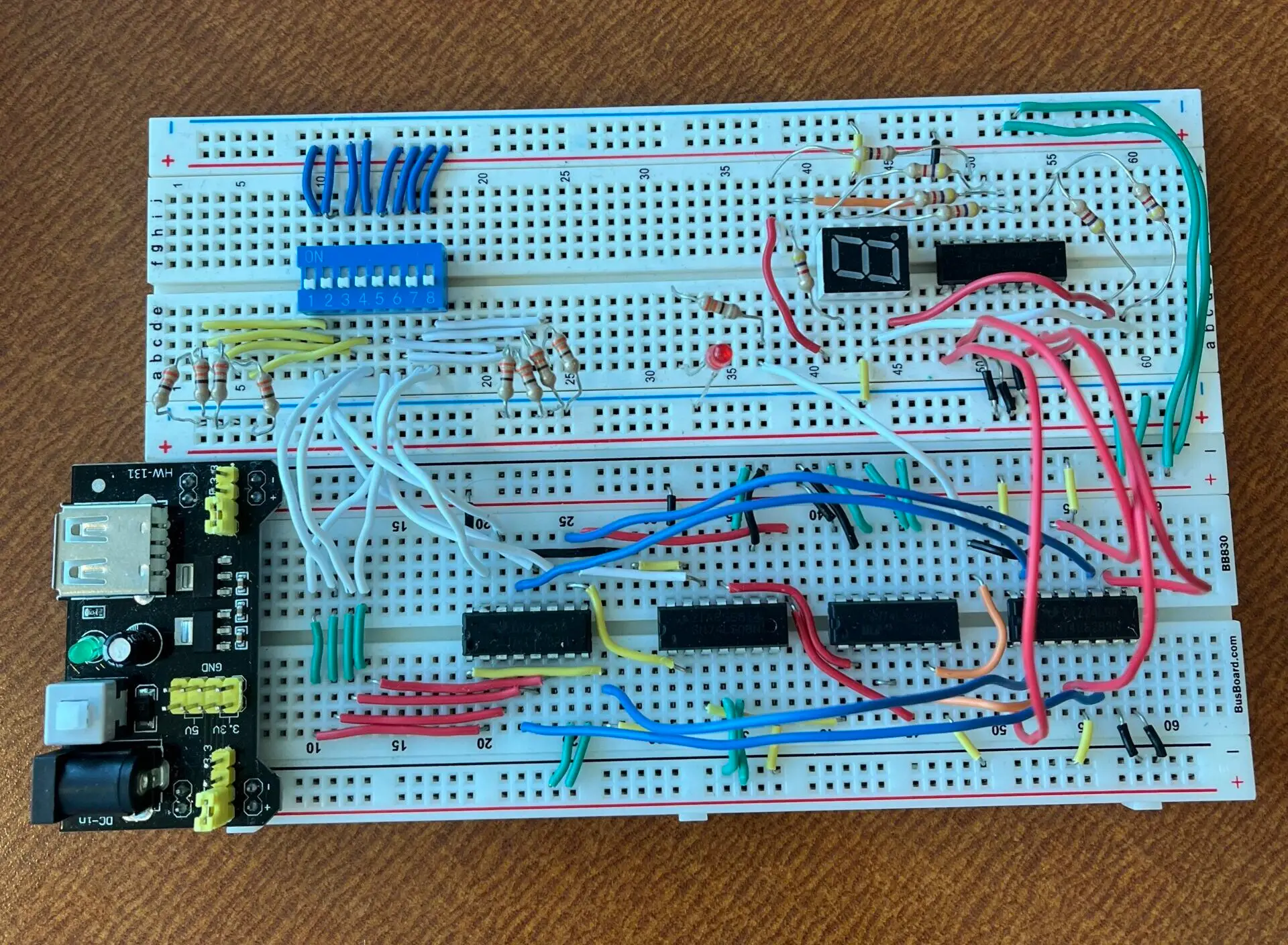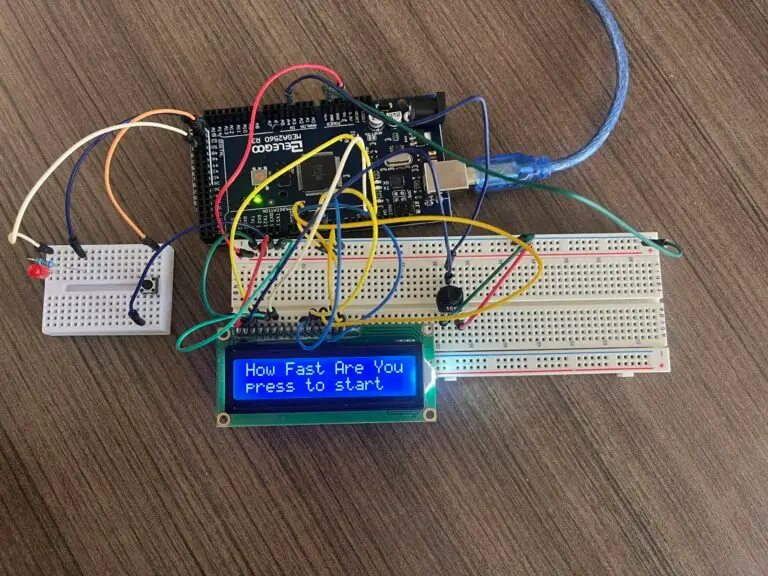Overview:
This project involved designing and building a Binary-Coded Decimal (BCD) Adder entirely on a breadboard using discrete logic components. The BCD Adder is capable of adding two decimal digits (0–9) represented in binary form and producing a valid BCD output with proper correction for values exceeding binary 1001 (decimal 9).
Project Highlights:
- Fully functional BCD adder built and tested on breadboard hardware
- Designed using basic digital logic gates and a ripple-carry adder approach
- Powered and interfaced with a regulated USB/breadboard power supply
- Logic includes automatic correction logic (+6) when sum exceeds valid BCD range
- Visual interface using DIP switches for input and a 7-segment display for output
My Role:
I independently designed, wired, and tested the full circuit on a breadboard. This included planning the circuit logic, organizing clean wiring for readability, and verifying output correctness through step-by-step testing.
Key Components Used:
- DIP switch for user input (BCD A & B)
- 4-bit full adder IC (e.g., 74LS83)
- Correction logic gates (AND, OR, XOR, etc.)
- 7-segment display and BCD-to-7-segment decoder
- Power module for regulated voltage supply
- Breadboard and jumper wires
Skills Demonstrated:
- Digital logic design and Boolean expression simplification
- Breadboard prototyping and schematic-to-hardware translation
- Hardware debugging and signal tracing
- Understanding of binary arithmetic, carry logic, and BCD correction methods
Applications:
This project simulates a core component of many embedded systems and digital devices that require decimal arithmetic, such as:
- Digital counters
- Calculators
- Timekeeping circuits
- Educational demonstrations for digital logic



